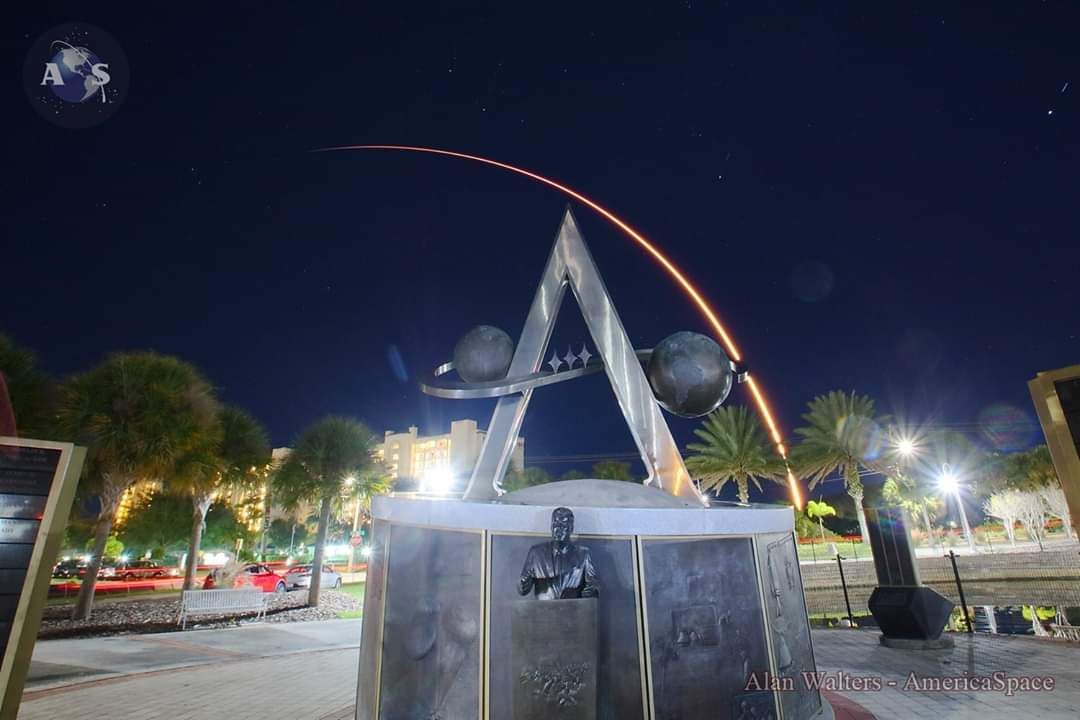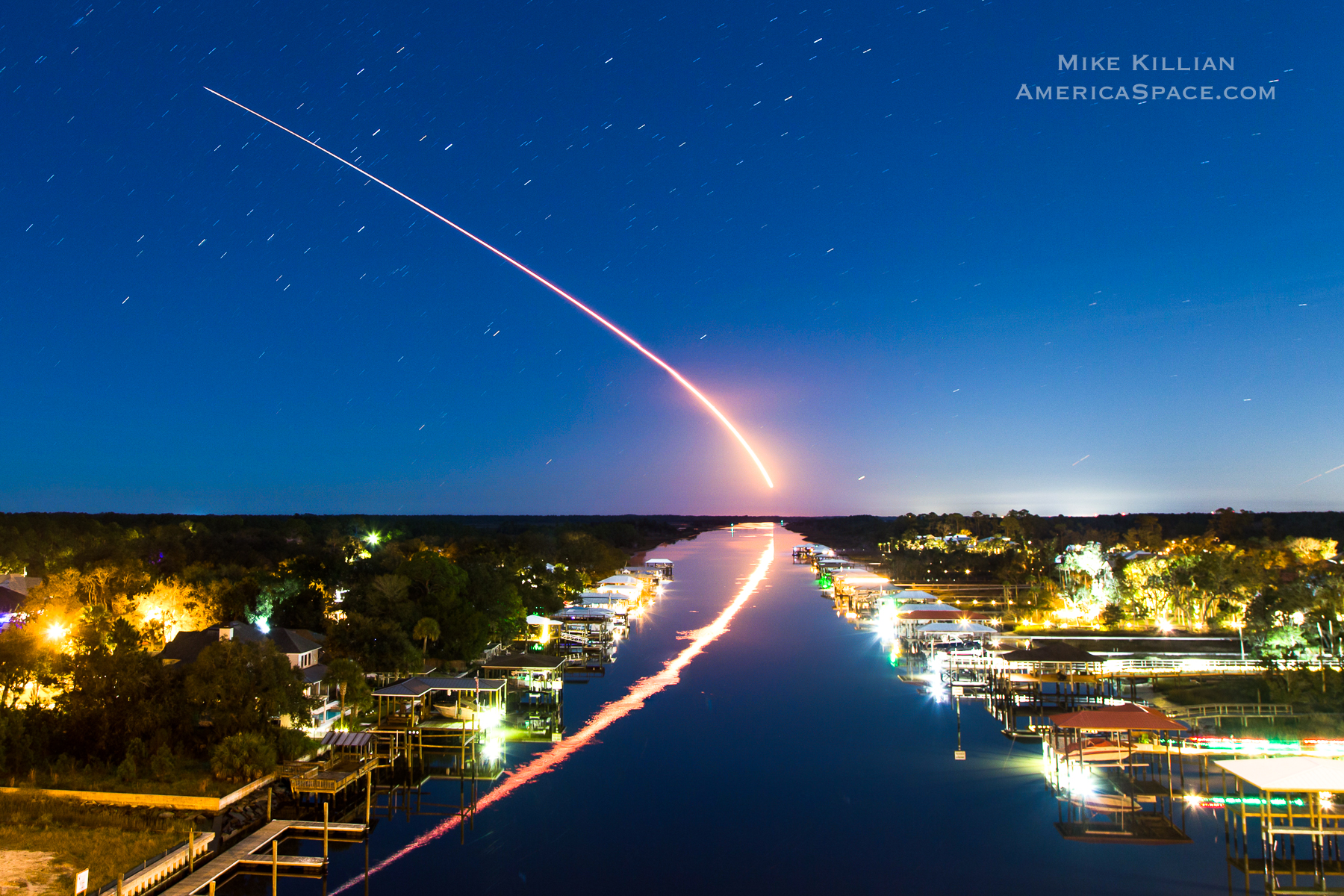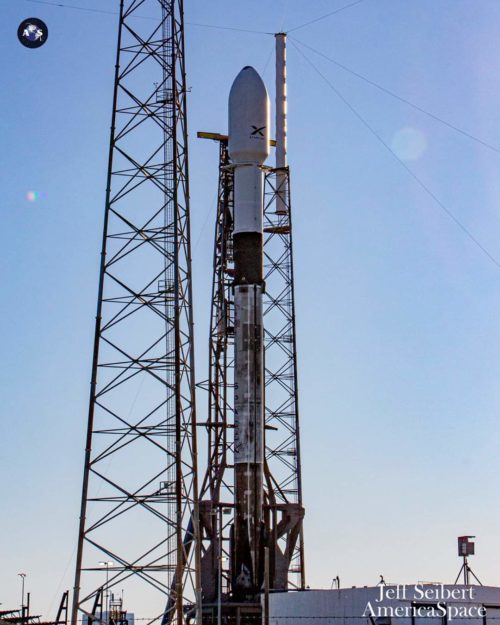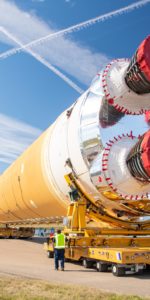
SpaceX has successfully flown the 80th fully-successful mission of Falcon 9 heritage hardware, with the spectacular Monday evening liftoff of the first U.S. launch of the 2020s. The record-tying, four-times-used B1049 core—teamed with a sparkling-new second stage and laden with a stack of 60 Starlink low-orbiting internet communications satellites—the mission took flight from Space Launch Complex (SLC)-40 at Cape Canaveral Air Force Station, Fla., during an instantaneous “window” at 9:19 p.m. EST.
It marks the dawn of what SpaceX anticipates will be an ambitious year, with perhaps more launches in the coming 12 months than ever before, including a new Starlink batch every two weeks.
As outlined in AmericaSpace’s preview article for this mission, 2020 also marks a full decade since the first flight of a member of the Falcon 9 fleet, way back in June 2010, which delivered a boilerplate mockup of the Dragon cargo ship to low-Earth orbit. Since then, the Falcon 9 has evolved through its v1.0, v1.1 and “full-thrust” Block 4 and Block 5 iterations to deliver 32 satellites to geostationary altitude, 19 fully-successful Dragon cargo missions and one Crew Dragon test flight to the International Space Station (ISS) and SpaceX CEO Elon Musk’s cherry-red Tesla Roadster onto a Mars-crossing heliocentric trajectory.
And Mr. Musk’s early promise of reusability has paid off in spades: including tonight, 30 successful droneship landings and 18 precise touchdowns on solid ground. Twenty booster cores went on to fly two missions, five did so three times and two have now recorded as many as four discrete launches.
All told, including tonight’s launch, 77 “single-stick” Falcon 9s have successfully flown, plus three missions by the mammoth Falcon Heavy, whose central core and twin side boosters also draw on Falcon 9 heritage hardware. The sole in-flight failure to date was the June 2015 loss of the CRS-7 Dragon, although another booster was lost in an on-the-pad explosion in September 2016 which destroyed its Amos-6 payload.
Weather conditions for Monday night’s launch attempt were highly favorable, with under 10-percent chance of violating factors. “Strong high-pressure building across the southeastern U.S. will bring cool and dry conditions along the Space Coast for the next few days,” noted the 45th Weather Squadron at Patrick Air Force Base in its L-1 briefing on Sunday, 5 January.
In keeping with usual procedure, SpaceX began loading the Falcon 9 with liquid oxygen and a highly refined form of rocket-grade kerosene (RP-1) about 35 minutes prior to the opening of tonight’s launch window. As the countdown proceeded into its final ten minutes, the nine Merlin 1D+ first-stage engines—which underwent their customary Static Fire Test last weekend—were chilled, preparatory to ignition.

The Falcon 9 entered “startup” at T-60 seconds, as the rocket’s on-board computers assumed primary command of all vehicle critical functions. The Merlins roared to life at T-3 seconds, ramping up to 1.5 million pounds (680,000 kg) of thrust, and liftoff occurred at 9:19 p.m. EST, right on the opening and closure of tonight’s instantaneous window.
B1049 powered the stack into the dark Florida sky, shutting down as planned at 2.5 minutes after liftoff and returning smoothly back to Earth to become the first Falcon 9 core to log four landings on the Autonomous Spaceport Drone Ship (ASDS). It previously achieved two landings on the East Coast-based “Of Course I Still Love” vessel, following its Telstar 18V and Starlink flights in September 2018 and May of last year, respectively, and also alighted on the deck of the West Coast-based “Just Read the Instructions” in January 2019.

With B1049 gone and heading back to Earth, the Falcon 9’s second stage picked up the thrust and its Merlin 1D+ Vacuum engine burned for six minutes, before shutting down. The deployment process for the 60 Starlink satellites got underway a little over 61 minutes into the mission. Their successful deployment brings the total number of these small internet communications satellites to just shy of 200. SpaceX CEO Elon Musk plans to put 12,000 Starlinks into orbit by the mid-2020s to ease internet availability in urban and underserved rural areas, although the plan has drawn criticism from astronomers and advocates for the reduction of space debris.
.
.
FOLLOW AmericaSpace on Facebook and Twitter!
.
.





